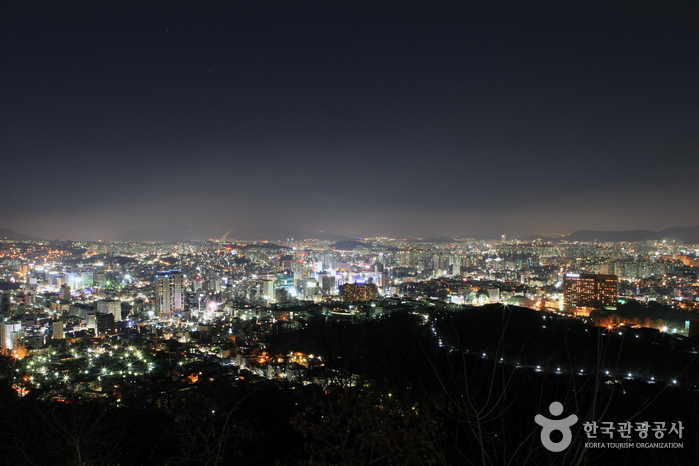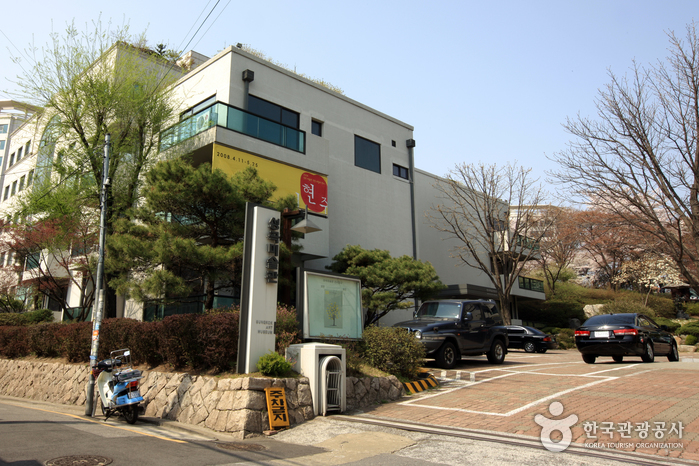Olens - Myeong-dong Embassy Branch [Tax Refund Shop] (오렌즈 명동대사관점)
6.5Km 2024-04-22
50, Myeongdong 2-gil, Jung-gu, Seoul
-
Gentle Monster - Zeus Eyewear Myeong-dong Branch [Tax Refund Shop] (젠틀몬스터 제우스안경 명동(위탁))
6.5Km 2024-04-18
2F, 105, Toegye-ro, Jung-gu, Seoul
-
Zeus Eyewear - Myeong-dong Branch [Tax Refund Shop] (제우스안경 명동)
6.5Km 2024-04-22
2F, 105, Toegye-ro, Jung-gu, Seoul
-
Seoul Namsan Park (남산공원(서울))
6.5Km 2024-03-18
231 Samil-daero, Jung-gu, Seoul
Namsan Mountain rises in the heart of Seoul at an altitude of 265 meters and has been a significant landmark since the Joseon dynasty (1392-1897), leaving behind several ruins. It was heavily damaged in the early 20th century, but was partially restored in 1968 with the creation of the park. Highlights include Namsan Tower and love locks left by numerous couples. Visitors can also easily reach the top by a cable car or bus.
Myeongdong Yeongyang Center (명동 영양센터)
6.5Km 2024-03-11
52, Myeongdong 2-gil, Jung-gu, Seoul
+82-2-776-2015
Myeongdong Yeongyang Center specializes in roasted chicken and ginseng chicken soup. The jeongi gui tongdak (rotisserie chicken) is light and juicy with just the right amount of fat, and the crispy skin is excellent. The vinegar-marinated radishes are a must-have side dish. Samgye tang (ginseng chicken soup) is also the signature dish of the restaurant. The lunch special, Tongdak set menu (Roasted chicken set menu), features roasted chicken, chicken soup, nutritional bread, and vegetables, offering a satisfying ensemble.
Sungkok Art Museum (성곡미술관)
6.5Km 2021-02-10
42, Gyeonghuigung-gil, Jongno-gu, Seoul
+82-2-737-7650
Sungkok Art Museum was founded in 1995 by the Korean corporation Ssangyong to promote Korean art. The gallery offers a special exhibition featuring modern artworks of Korean artists, as well as competitions and sponsorships to develop Korean art. In addition to the main building, there is an annex, as well as a tea house and art shop.
YallaKOREA (얄라코리아)
6.5Km 2025-10-23
#700, The Salvation Army Building, 69 Saemunan-ro, Jongno-gu, Seoul
YallaKOREA is a medical tourism agency specialized in serving Arab patients, providing medical services since 2016 for those wishing to visit plastic surgery and dermatology clinics in Korea. For patients undergoing surgery, it offers customized services including medical interpretation, private transportation, hotel reservations, airport pick-up and drop-off services, and daily tours. With years of experience and a deep understanding of Arab culture, it ensures safe and convenient medical tourism.
The Bus Stop (더버스스탑)
6.5Km 2024-03-12
26-1, Toegye-ro, 20-gil, Jung-gu, Seoul
+82-10-9083-9616
Located between Myeongdong Street and Namsan Mountain, this café is a perfect place to stop for a drink and dessert while traveling around Seoul, as its name means "bus stop". They serve tasty coffee, ade, bubble tea, and other drinks, as well as a variety of desserts. The neighboring Namsan Pork cutlet Street is worth a visit for meal before visit here.
TUBAn [Tax Refund Shop] (주식회사 투바앤)
6.5Km 2024-04-23
1955, Goyang-daero, Deogyang-gu, Goyang-si, Gyeonggi-do
-
![Olens - Myeong-dong Embassy Branch [Tax Refund Shop] (오렌즈 명동대사관점)](http://tong.visitkorea.or.kr/cms/resource/05/2878605_image2_1.jpg)
![Gentle Monster - Zeus Eyewear Myeong-dong Branch [Tax Refund Shop] (젠틀몬스터 제우스안경 명동(위탁))](http://tong.visitkorea.or.kr/cms/resource/15/2878615_image2_1.jpg)
![Zeus Eyewear - Myeong-dong Branch [Tax Refund Shop] (제우스안경 명동)](http://tong.visitkorea.or.kr/cms/resource/35/2878635_image2_1.jpg)



![TUBAn [Tax Refund Shop] (주식회사 투바앤)](http://tong.visitkorea.or.kr/cms/resource/47/2890647_image2_1.jpg)
 English
English
 한국어
한국어 日本語
日本語 中文(简体)
中文(简体) Deutsch
Deutsch Français
Français Español
Español Русский
Русский